Art, Words and Rock and Roll: Stephen Joester
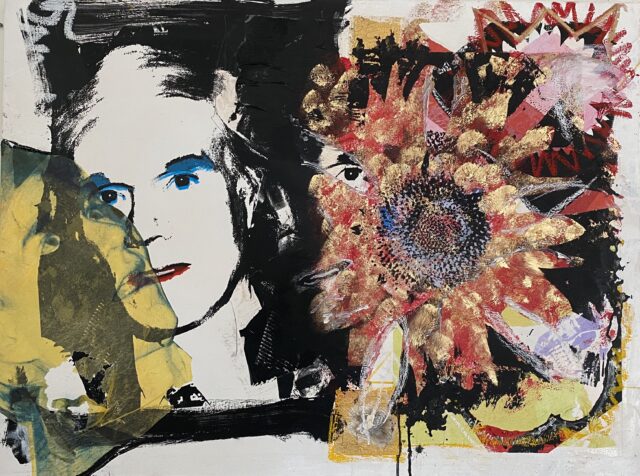
Music is experiential in a way similar to art. Perhaps more visceral, or at least it is more universal, allowing for an immersive and participatory reaction. As part of my ongoing reflections of the ‘real-fake perspectives on art,’ and the inherent proposition of “what is art, what is beauty,” that is always the nagging question at the core of such dialogue, I paused to muse on works created in connection to music.
I don’t mean in the abstract manner of how music might influence the artist at work. Such as Piet Mondrian’s professed love of jazz and the conjecture of how it might have influenced his measured geometric patterns. Instead and more exactly, I wanted to examine when music is the primary subject of the work itself. More specifically, I wondered how that might influence the viewer and potentially elicit a more reactive response to a work of art. As such, I immediately thought of my friend, artist-photographer Stephen Joester and decided to pay him a visit.
Arriving at his beautiful Hamptons, Long Island home I am greeted by his wife. After settling my things into one of the guest rooms, I am immersed at once in my own experiment on perspective. Waiting for Stephen in the dining area I find myself under the watchful eye of two legends of slightly different eras of music – Mick Jagger and Elvis Presley. Two massive portraits dominate the decor of the room and stand like iconic sentinels on either side of the entrance way leading from the dinning room to the living room. Although the center focus of the canvases are large scale photographs, the Jagger, taken by Steve, and the Elvis, his only piece with photography that isn’t his own, they are surrounded and animated by a swirl of color that creates an energy that almost pulses rhythmically from the frame. Steve was an early pioneer in creating multi-media works using only his own photography. They are reminiscent of the Pop Art style of Warhol’s portraits and equally familiar in their boastful presentation of two legends. Yet it is the vibrancy that surrounds the photos, and in Mick’s case, even boldly enveloping his image that quickens the pulse and stimulates the eye.
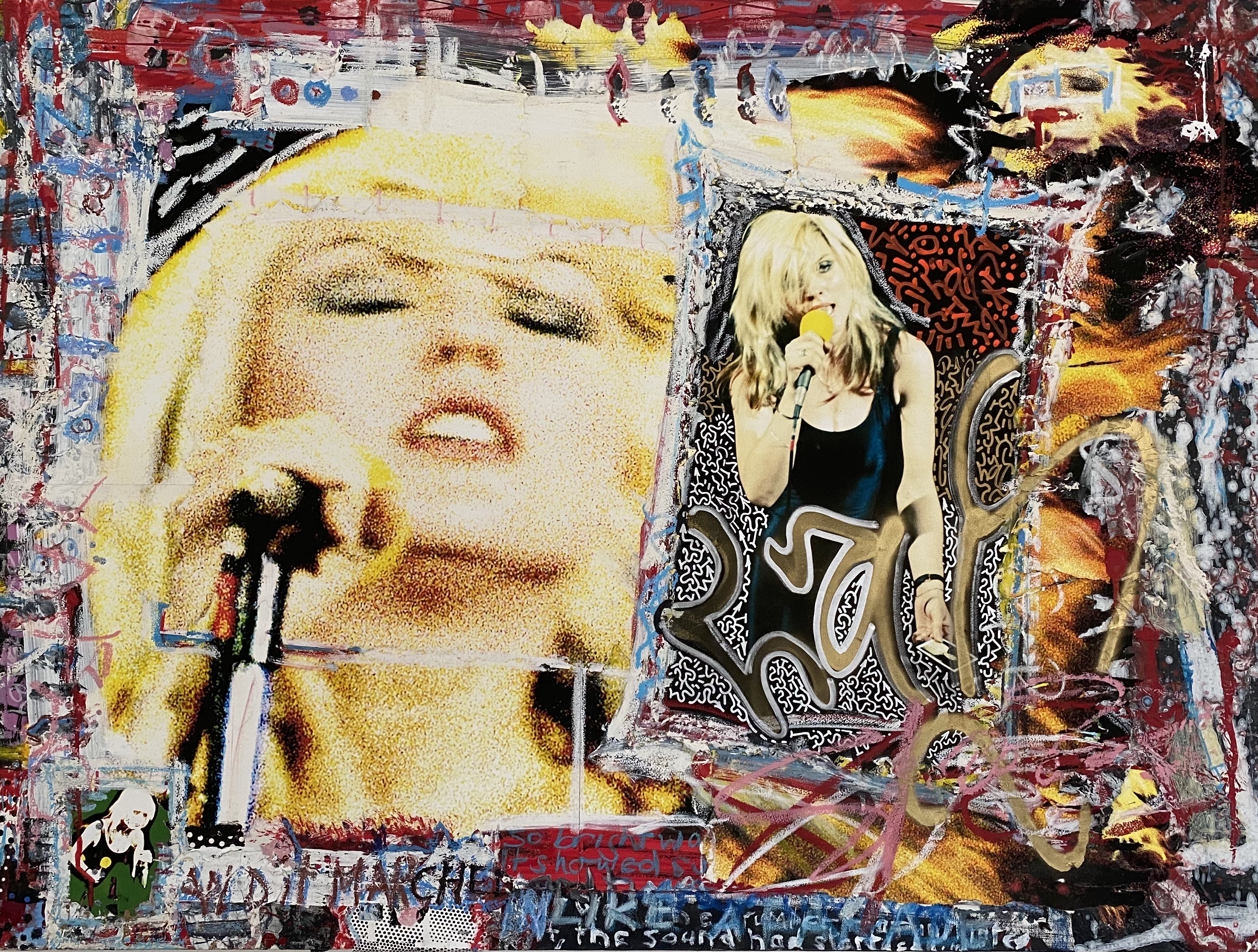
I am drawn more immediately to Mick, in part, perhaps because of my connection and preference to the music of The Rolling Stones, more so than that of Elvis. For me and my musical tastes, Elvis never really entered the building and Mick and the Stones have never left. Similarly though both of these front men were as equally musically talented as they were uniquely sexually magnetic. However, I am immediately drawn into the frame on the left, or more specifically into Mick, as if for the first time intuitively understanding the full sexual appeal of this rock and roll legend. His somewhat innocent bystander gaze, mixed with his unique pretty boy sensualness is contemporary once more in a new generation erroneously claiming proud ownership of a culture of the “non-binary,” as if they invented the concept. Yet here gazing out at me, is this early revolutionary.


I am suddenly struck with the sneaking feeling that perhaps it was Debra, Steve’s brilliant and thought provoking wife who curatorially placed Elvis on the right side and Mick on the left. It is part of the gentle but subversive genius she brings to this artistic partnership and to the couple’s own art collecting, which is modest but significant.
While I await Steve, I amuse myself with a Stone’s playlist in my head. I settle on The Stone’s “Rip This Joint.” Its double timed juke-joint beat and its bluesy lyric line pull from the same Black music stylings from which Elvis often borrowed.
I have a mounting desire to strut or even glide across the dark wood floors of the Joester’s dining room, rocking a lick on my air guitar. It is the patina with which I now color Steve as his long, lean frame enters the room and as he greets me in his own natural English accent. Though we have met socially many times before, it is the first time I begin to perceive him in the same light – that of a rock and roll legend himself. And I am suddenly a wee bit nervous that even as a colleague and fellow photographer (and filmmaker), I am about to “jam,” at least in discussion, with a genuine old school master of a famed era of sex, drugs and rock and roll.
We talk a few moments longer to catch up under the watchful eye of Mick and Elvis. Steve offers a little detail on the Mick portrait which is based on one of the first of this series he created in 1976. He offers a hint of the process of adding the element of color that surrounds the image and fills the rest of the frame with vibrant color and raw energy.
At his cue I grab my Pelican case filled with my own camera and lens with which I will film our visit and we head out the back of the house toward his studio that is above the two car garage.

Walking past their pool and tennis court, and taking in the beauty of the blooming trees and bushes of this early summer day, I find the opening of Joe Walsh’s “Life’s Been Good to Me,” running through my mind. However, it is the little idiosyncratic artistic touches scattered throughout the grounds, commingled with nature’s beauty that clues me in to the fact that this is where Steve centers his creative process. More so than his New York City flat where we have met before. Even as we cross the threshold of the downstairs door to his studio I see the temptation of his muse. Quite literally as there is a small cast sculpture of a reclined female nude propping open the screen door. However, it is as I begin to climb the stairs to enter the artist’s loft studio that I begin to feel the thrill that comes with this part of meeting and talking with artists. The studio-visit is the best way to get to know them inasmuch as to truly explore their work. It is found in the smaller elements, touchstones for inspiration and even distraction that clue you into their technique and the ebb and flow of their creative process. By the time their work hits the gallery wall, they and their art are at their most polished best and all this other joyous clutter is removed.
As I reach the half landing where the stairs take a pivot the clutter of work begins. There is a large collaborative painting near the side window that Steve did with the globally recognized street artists, Tats Cru. It incorporates an image of Mick that feels like a concert poster has been painted over with graffiti. This next to another one of Steve’s on the main wall that features the band AC/DC in a montage of shots that seems to be swirling around the 60” x 60” canvas with the perspiration-fueled head whip of their lead singer. And still is one other Mick collaboration entitled “Mick Dip,” which was done in collaboration with the famed Lower East Side graffiti artist LA2. I am viewing these works on the move and via a quick over-the-shoulder introduction by Steve. It’s reminiscent of the way one meets celebrities backstage at a concert while pushing toward the dressing rooms of the main act. The interlopers, in this case, each of some status themselves, are just hangin’ in their own moment and though you want to stop and stare, you keep moving to let them just be.

Rounding the last few steps that lead to the main room of the studio, I understand why we pressed on with minimal ceremony. Standing as guardian to the studio, and in larger than life proportions, is a signature canvas of Mick that so strategically “hangs out” here, it unsettles and humbles you, immediately immersing you in both Mick’s raw sexuality and Steve’s combined talent as both photographer and painter. Even Steve greets his work with typical British nonchalance accented with a hint of whimsy, “Hello Mick.” Meanwhile, the visitor, male or female, is left with the giddy embarrassment akin to seeing the Stone’s album jacket for “Sticky Fingers” for the first time as a teen. That is the sense I am left with now having a full view of the studio.
The Joester creative lab is a mess. A fantastic, colorful, joyous mess. And everywhere my eye darts is art, Steve’s images of musical artists I know, love and of whom I even once owned the vinyl. The closest comparison I have is the memory of the attic hangout with the older brother of a girl I dated in Italy when I was just a teenager. I am struck by the distant sense memory of listening to Deep Purple’s “Smoke on the Water,” under the watchful gaze of black light posters on the wall, including one of a gorgeous full-afro, near-naked Black woman smoking a gigantic spliff with the smell of hash actually permeating the enclosed space. Steve’s studio is that kind of a man cave sanctuary and I feel honored to be invited in by one of the cool kids.
Make no mistake about it, this attic lair is vastly different in that true creativity and vision abounds. Between the brushes and tools and paint cans there are raw canvases, stacked canvases and even unstretched canvases and paper prints on the floor. My eye darts toward a layered work of the legendary Reggae singer/musician Bob Marley and I am so immersed in the sense of being concert-side that it takes me a full twenty minutes to realize I am standing on several test prints of yet another Jagger series. I jump off suddenly as if standing on hot coals.
He shows me some monochromatic prints of his many Mick portraits that he did on a bright shiny silver Mylar. They have a pop-art feel, iconic of the era in as much for the material as for the bold red or black that almost floats on the surface. He shows me a photographic print of another that he admits was first printed on tin foil and which he continued to then rephotograph over the course of a year as the foil began to shed some of the photographic ink. Literally it is Mick in “Tatters” and it is masterful. “I even kept all the black bits, though I’m not sure I know what I am going to do with them,” Steve shrugs this off with his signature laugh and I can’t help but covet the work, saved flecks and all.
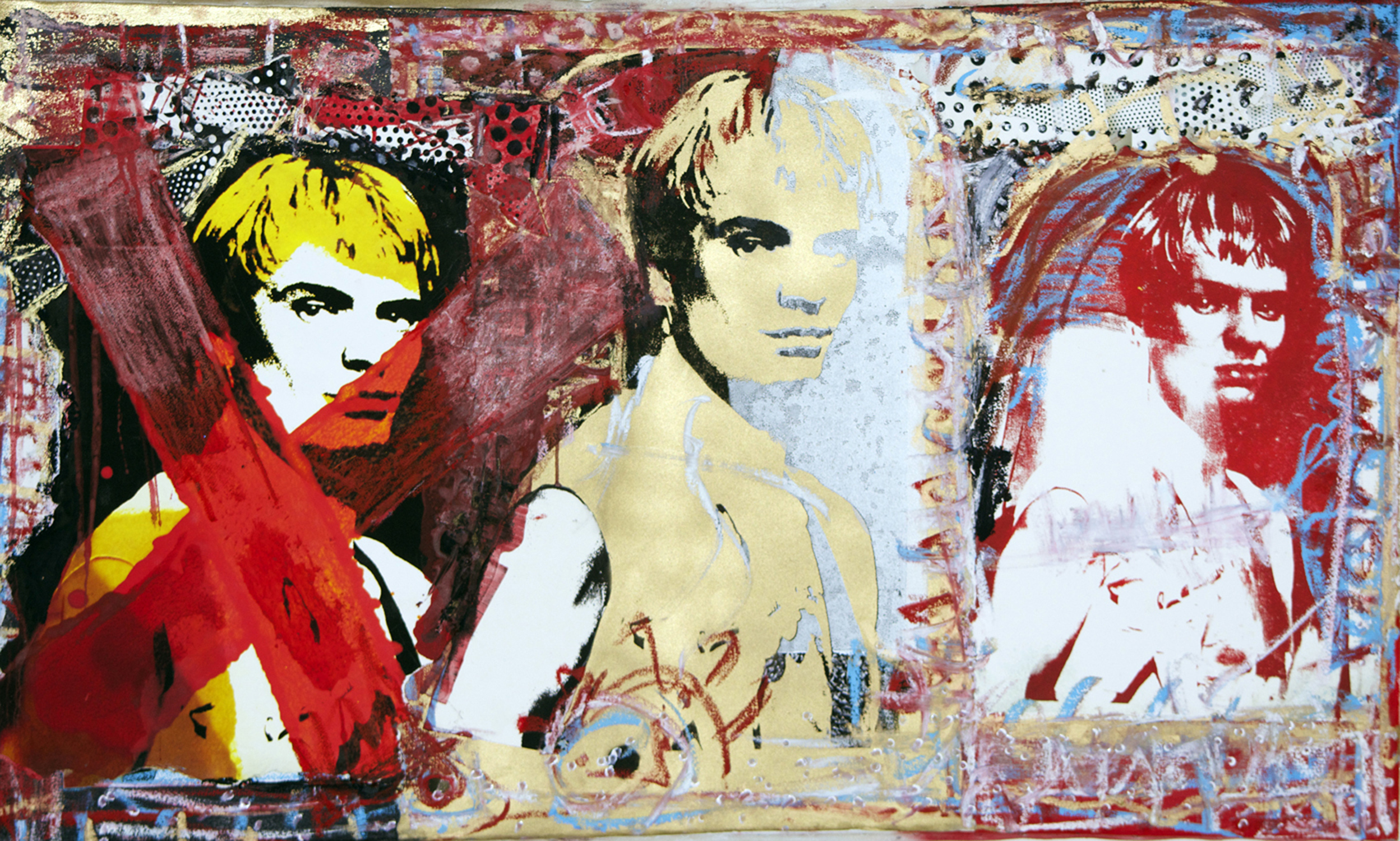
Then I spy an undoctored print of another crush of mine from my club days – Grace Jones. I playfully offer, “I’ve seen that face before,” referencing one of her songs as I cross to pay closer homage. Steve lets me in on not only how the shot came about but we talk about the inspiration of lighting the moment. You feel her joyous furious feline energy that she tempts you closer with all the while knowing full well you might be devoured whole. The two of us obsess for another moment over Grace as a musical artist, natural and unique beauty, as well as an ever-current icon. “And, she’s my neighbor now in the city,” admits Steve, almost in disbelief himself.
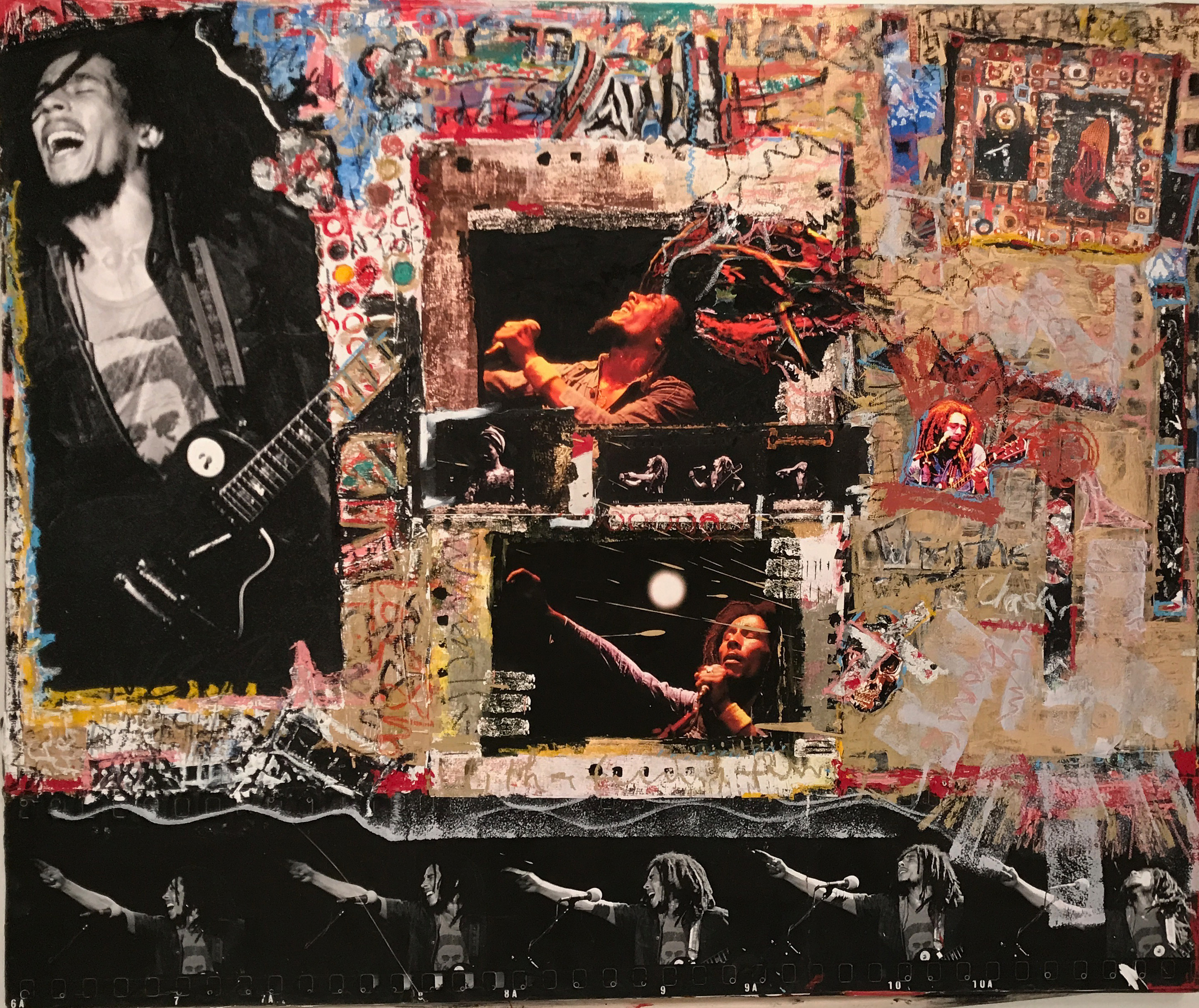
From this he points to the silkscreen print he did of this portrait that strips away the background and leaves her in solid black ink on a gold background. This is how and where I am beginning to understand his process of sometimes incorporating a color photo, reducing it back to black and white or in a monochromatic color and seemingly using it as the under canvas outline for painting over it and around it.
Next to Grace is another musical crush of mine both for her genius as a vocal artist and now as a visual artist herself – Annie Lennox. Steve’s image is of a very young Annie, with her signature chopped short hair. It dates back to her pre-Eurythmics days when she and Dave had a band called The Tourists. Steve has cast her in mostly a double shade of pink with the exception of a black outline and sunshine colored eyes. I smile thinking of her radiant duet of “Under Pressure” she did with David Bowie. Last of the series is one that I question my own recognition of because it is a rather youthful and buoyantly spirited photo of Sid Vicious. On the surface he looks happy, furtively shy and like someone you’d like to get to know. “Yeah, he was a lovely lad.” Says Steve. “Except for the slashing and drug overdoses,” he teases. It’s then that you feel the pull of the other colors that seem as if they are ripped layers which have been stripped away to reveal a deeper pathos of both Sid and Steve.

We begin to talk more deeply of his artistic process that is woven with the organic flow of his career. I learn that he started his journey very much grounded in traditional art training in England. “I started in fine arts, painting and sculpture, in art college, but that didn’t last long. I ended up hitchhiking around to see Europe as probably most artist students did back then.” Steve offers and then pauses reflectively. “Then, I ended up seeing the movie Blow Up when I got back and that got me into photography.” He is referring of course to the seminal 1966 film by Michelangelo Antonioni and we share a kindred moment. Although he was old enough to see it in the theaters when it was first released, I saw it later in film school when I was studying the Italian masters of my art form. Though there was a difference in the time of our individual experiences seeing this film, the impact and influences were the same. “Yeah, after seeing David Hemmings, I got some white jeans, some black boots and a camera and moved to London,” laughs Steve.
He goes on to admit that things were a bit different than hoped for when he got there and so he just started shooting some of the things he saw. “I used to love going to the club and music scene so I started shooting that.” Even the way he throws this off with a signature calm and classic English understatement, I realize how this was a spectacular representation of the axiom of photography – simply being at the right place at the right time to memorialize a quintessential moment that will never be again.
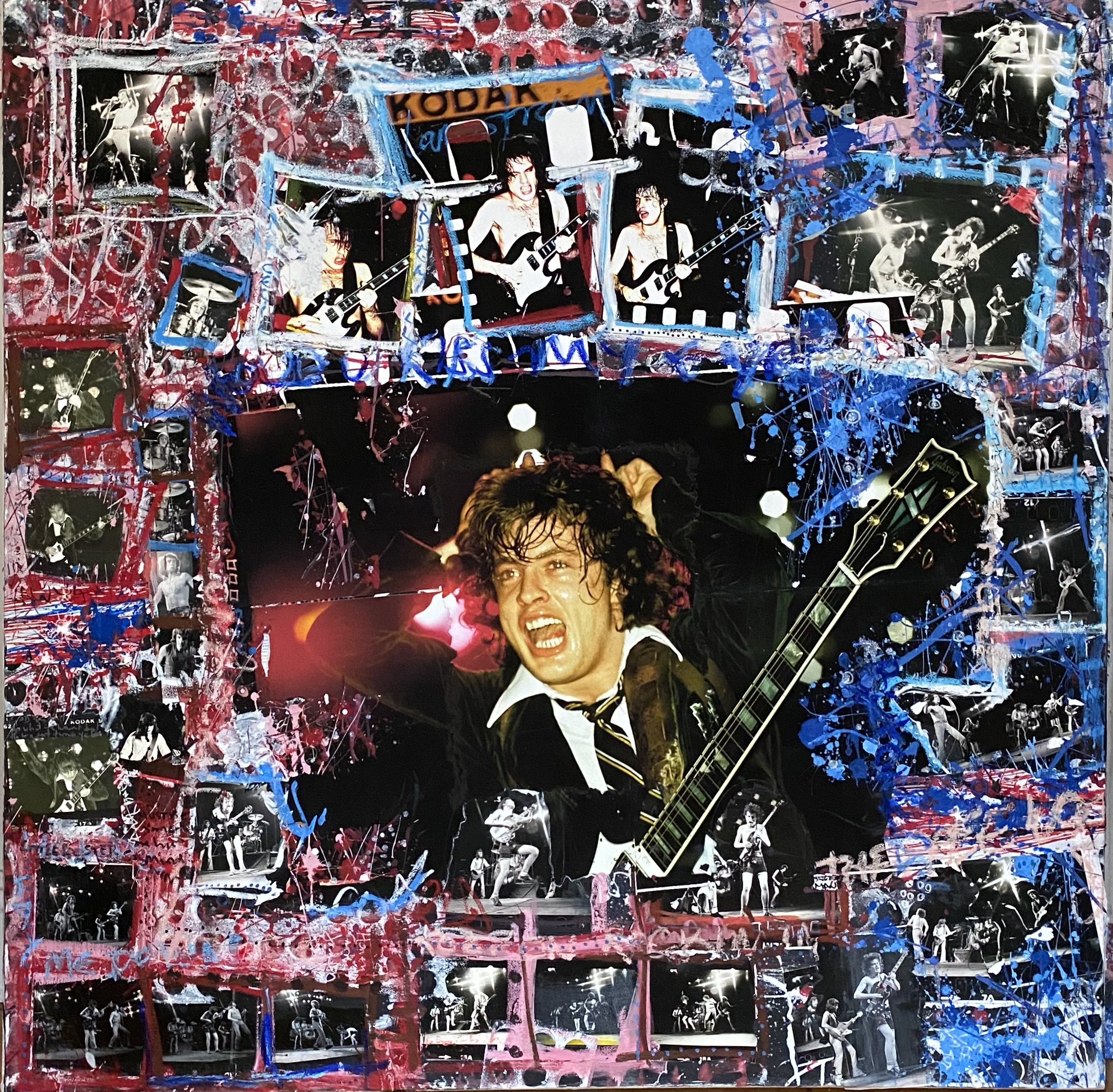
To listen to Steve explain it, he was simply practicing something he loved in an environment – “the local music pub” – that spoke to him. He punctuates this portion of his story with a shrug and offers, “It just grew from there.”
What he of course has left off and what I only hear him owe up to, at least a wee bit after a little prodding is the follow up hustle he then put in post concert going to the local papers and the few music trades of the time. Keep in mind that this would have been when you didn’t just email an inquiry. Instead you had to call and chase this down with a visit, or even three, before you caught their attention and then you had to work to maintain continued trust. “Back then, the music industry was reading the three or four music papers that there were, so you got access pretty quickly and pretty easily,” He adds, once again underselling his distinct ability to capture the energy of a concert. It is ever apparent though in the work I am surrounded by and my eye falls back upon the Bob Marley montage in which the performer’s famed dreadlocks seem to cascade sideways across the frame and one imagines them exceeding the boundaries of the canvas.
“There wasn’t much money in it back then,” Steve explains, but he adds, “you couldn’t ask for a better subject than a rock and roll band.” He is lost in his thoughts for a moment and smiling modestly. It’s only after I point out the obvious that this was pre-digital and even before the point-and-shoot cameras that he adds, “Yeah, it was intense cause you knew you only got 36 shots.” Even he admits in this intimate moment and as almost for the first time, “it was pretty cool.”
I can’t resist asking Steve about his own musical tastes and I am a bit taken aback to hear him recall his first album being that of Johnny Cash Sings the Songs That Made Him Famous (originally released in 1958).
We drill down on musical tastes and on favorite artists that he has photographed over the years and they are as varied as they are many. He cites the American rock band Lynyrd Skynyrd, of course the aforementioned Bob Marley and ZZ-Tops both visually and musically.
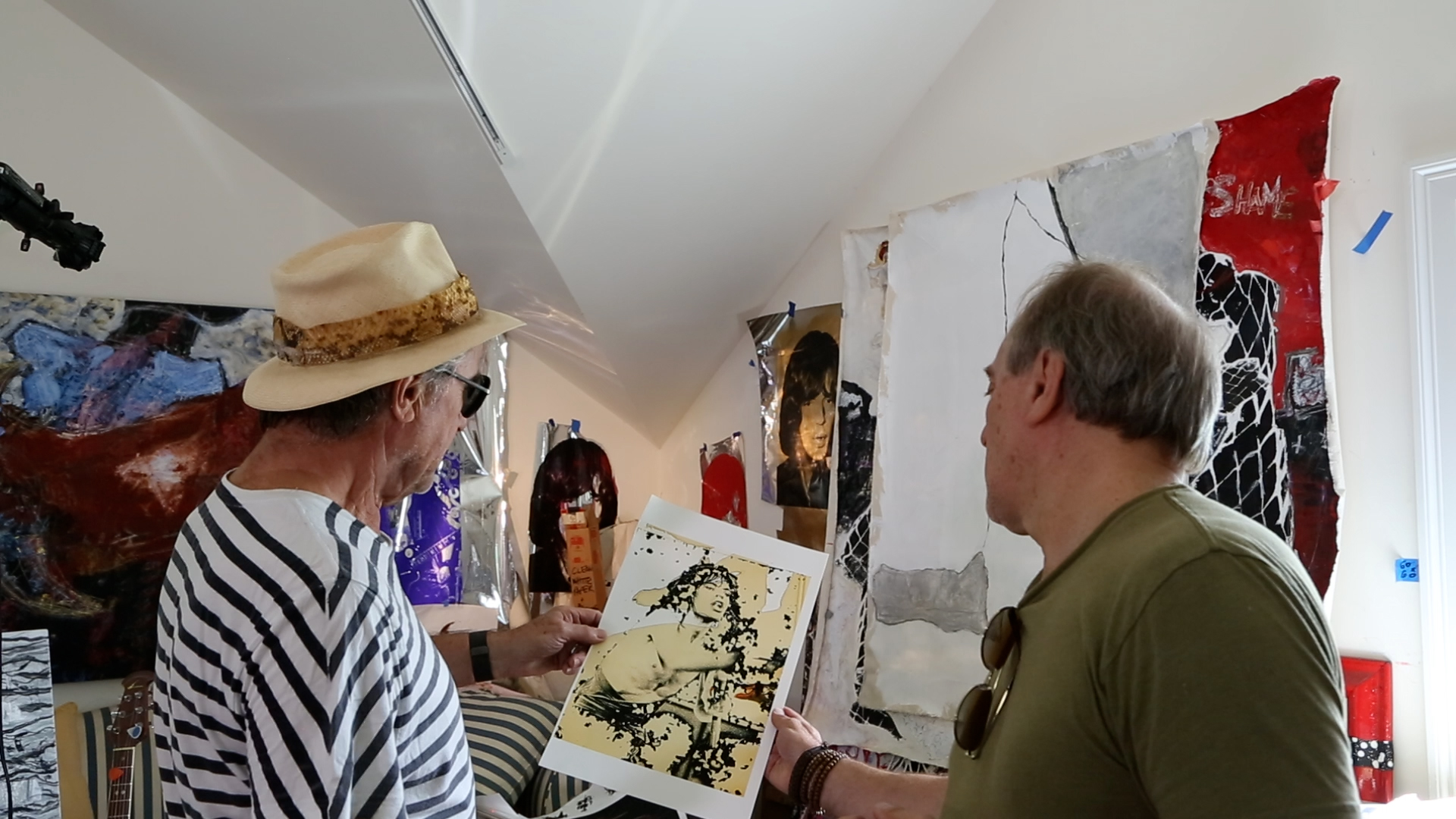
Our conversation about music and photography turns from a purely cultural conversation to one of politics. Particularly he speaks to the England of his youth and how music was suddenly shaking up the classist society and now challenging many of the societal norms. “It was a pretty interesting time,” he offers while adding that it wasn’t necessarily anything anyone realized in the moment. We segue into discussing how it would be the Notting Hill Carnival Race Riots of 1976 that would lead him to come to the United States for good. It also eventually forced a dramatic change in policing methods in the British capital.
Steve tells me how on the day of the now infamous West Indies carnival, he was coming home very early in the morning from the night before. Passing through the area that hosts the annual festival he noticed “all of these police buses parked on the side streets of the area.” He continues, “And I noticed they were filled with cops.” He reminds me, “As you know, Britain is pretty racist. It definitely was back then. They didn’t like the West Indian celebrations.” He takes a trepidatious breath and continues. “Sure enough, something happened and some kid was accused of grabbing a woman’s handbag and suddenly out of nowhere there were a thousand cops in the street. It was just solid cops and on the other side it was the public. They were just sick of the harassment.” He makes sure to point out that the public side of the crowd was mixed racially. Suddenly a riot broke out and Steve just kept snapping photos. As he continues to describe the scene he continued to film, I not only hear the intro to The Clash playing “Police on my Back” I can feel my body recalling that rhythmic type of kick or slam dancing one did to this genre.
His images of the riot were featured the next day in one of the London leading daily newspapers both on the front page and in a feature spread inside. “And, I was giving a photo credit. That turned out to be a mixed blessing,” adds Steve.
It turns out that a group of plain clothes policemen in the back had started throwing bottles and rocks at the line of police and that gave them the excuse to start attacking the protestors and ignited the riot. Since Steve had photographed these men, he drew unwanted attention from a special private branch of the British police force that searched his flat on the morning he was fortunately dropping off the film of the riot to the British media outlet, The Telegraph. Though all of his gear and whatever cash was in the apartment was still there, all of his important papers such as passport and driver’s license were missing. Very obvious signs were left in a rather conspicuous manner that someone had been there and wanted it felt.
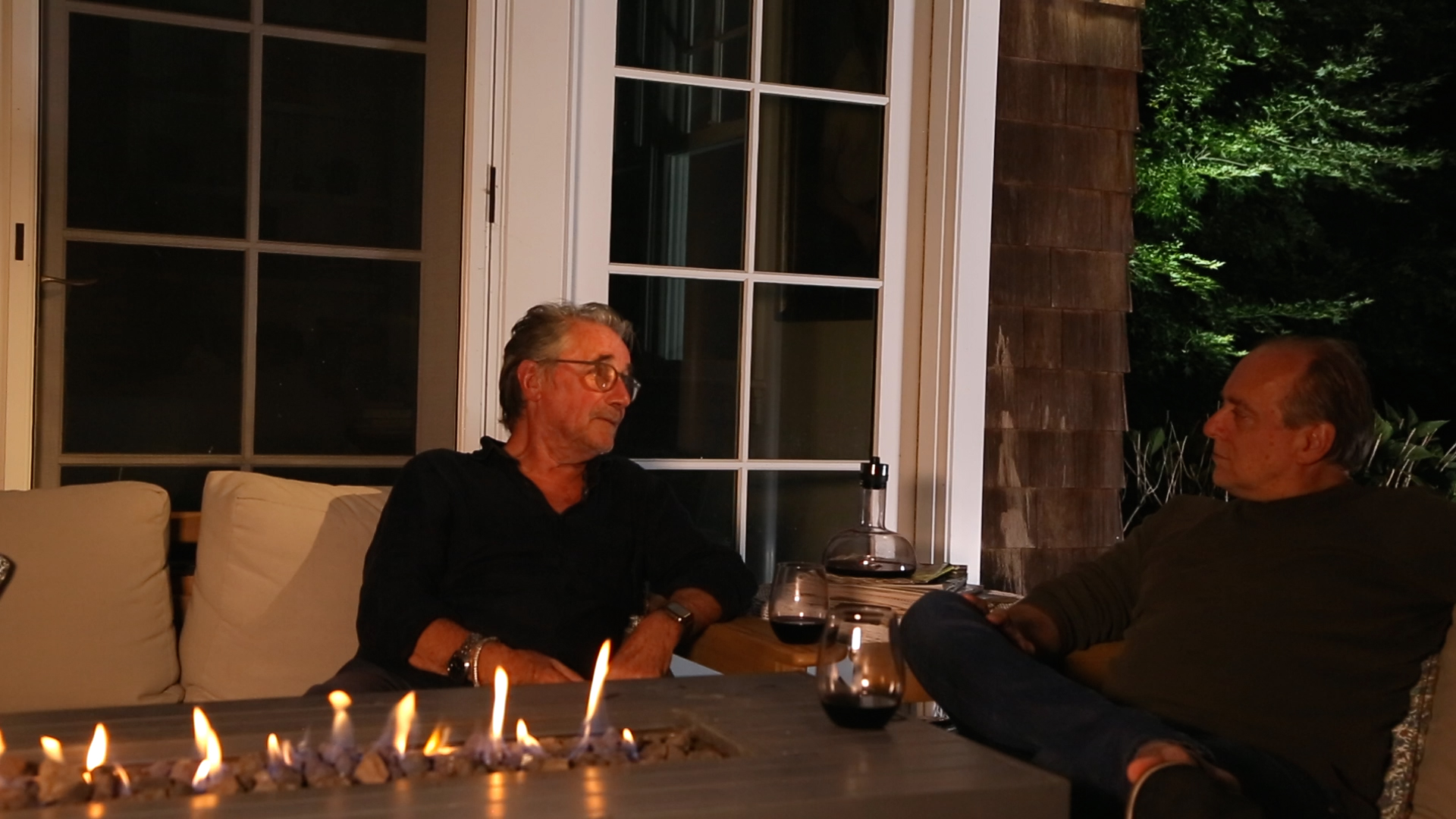
“Britain is not a democracy. It is at the pleasure of Her Majesty’s government and you don’t have the same rights you have here,” he reminds me, who like most native-born Americans, sometimes takes this for granted.
Steve took the not so delicate hint to heart. He replaced his passport as quickly as possible and immediately put it to use by coming to New York City in 1977 where he has been ever since. “So I guess in some ways they did me a favor,” Steve quips mockingly. And, he has since put those images to work alongside shots of the formidable English punk band, The Clash in an epic two canvas work of the same name.
“Don’t look back,” I suppose.” says Steve playfully. And indeed he hasn’t since. And, in so many ways, I realize that is in essence what is so alluring of Steve’s work. It offers a fresh and very individualistic perspective of the past he has been blessed living. It is uniquely zen in that regard. His own photographic work acknowledges a cherished moment in the past not just of his own making, but of a fellow artist. The vibrancy of all that he has since added offers no room to lament the passing of that brief click of a shutter. Instead of staying locked forever in something that cannot be truly re-lived, Steve brings it into ‘a moment of now’ with shadows of color, swirled lines of abstraction, layered material inclusive of the written word, and even a strip of negative complete with the distinct sprockets of what is now a near obsolete practice of non-digital photography.
Just like his most favorite subjects who remain our sublime heroes, Steve continues to move forward, seemingly on perpetual tour. Over wine that evening he tells me of his adventures in Cuba many years ago and describes the images he took there. He wishes to mount an exhibition of those images mixed with and connected to a revisit to the Caribbean isle decades later. Will it just be a moment in time or will it help him to practice his unique brand of the philosophy of now. However, more immediate, tomorrow I am invited to comb the pristine Hampton beaches with him in search of good pieces of driftwood from which he has been burning his own charcoal for his newer abstract works.
I relish the thought and realize that just like music, every aspect of Steve Joester’s art is experiential, if only you open your eyes to it. As I sit in reflective silence in front of the gas fire pit with Steve, I begin to absentmindedly hum Aerosmith’s “Dream On.” Steve picks up on it and before you know it, both Steve Joester and I are grabbing our air guitars and strumming out a duet, mostly for ourselves, like two perpetual bad boys of art, words and rock and roll.


Jeff Oppenheim is an award-winning filmmaker and journalist who writes and reports on cultural issues often. His recent productions include the art-crime documentary: “Real Fake: The Art, Life and Crimes of Elmyr de Hory” available on Amazon and Vudu. He served as executive producer of “Kuduro NYC” and the Angolan “Os Kuduristas World Music and Dance Tour.” His short documentary “Absolute Funk”, (produced with Reginald Hudlin), screened at the famed Apollo Theater in celebration of George Clinton’s 70th Birthday All-Star Concert, which Jeff also co-produced in association with Ray Chew. He also produced the live broadcast of the 2015 season of “Lincoln Center Out-of-Doors” and the Mostly Mozart: A Little Night Music series. He is currently producing a podcast series on art and the art market called “Real Fake Perceptions” and for his YouTube channel “Tomorrow’s Journey.”
Edited by Lauren Lombardi.







